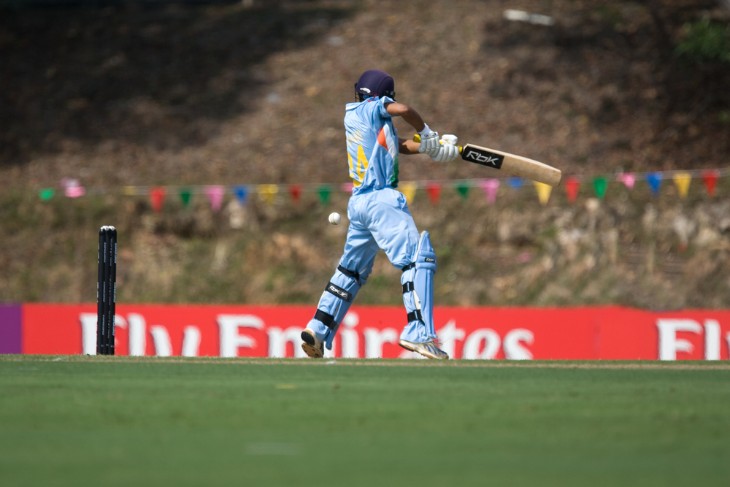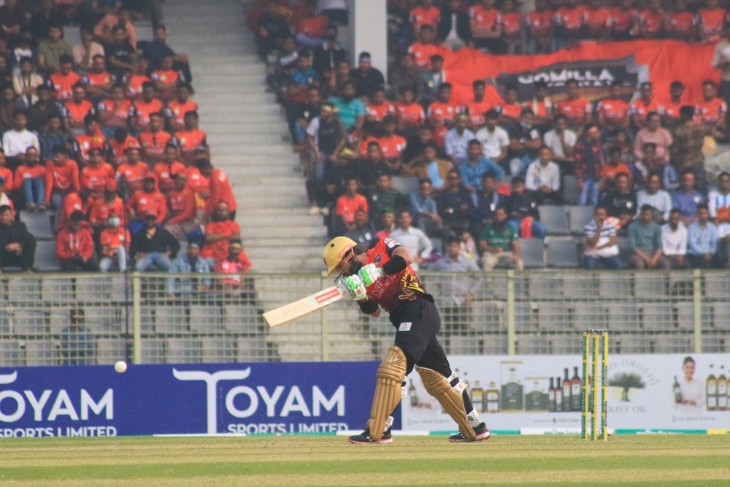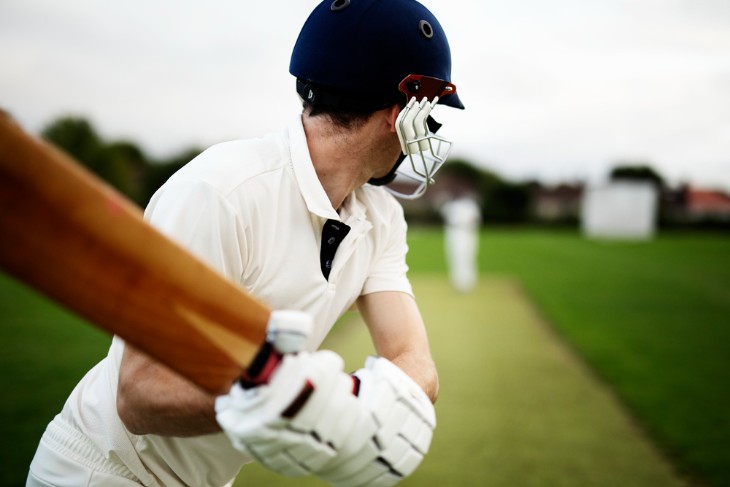Introduction
Reverse swing occurs when a fast bowler is bowling with an older ball and can often swing the ball in the opposite direction than his normal swing bowling, which can surprise and confuse the batsman. If used correctly it is a very useful tool for any bowler.
We are going to explore this amazing reverse swing in cricket. We'll learn where it came from, how it works scientifically, and what special skills fast bowlers use to accomplish it. Come with us on this journey to understand the reverse swing, a cricket magic trick that shows the exciting and unpredictable side of this wonderful
How do I bowl a reverse swing in cricket?
Bowling reverse swing in cricket is an art that can be mastered with practice and skill. To make the cricket ball swing in the opposite direction, follow these steps:
1. Maintain the Ball: Keep one side of the ball shiny and smooth, and let the other side become rough. The shiny side should face leg slip or leg gully for an inswinger, or off-slip or off-gully for an outswinger.
2. Wear and tear: The ball's rough side naturally develops as it hits the pitch and through use. You can speed up this process by using saliva, sweat, or rubbing the ball on the ground. Ensure you follow any rules about altering the ball.
3. Bowling Action: A consistent and clean bowling action is crucial. Focus on your wrist position, seam orientation, and delivery angle.
4. Vary Seam Position: Adjust the seam position for inswing or outswing. For inswing, the shiny side faces leg slip, and for outswing, it faces off-slip.
5. Bowling Speed: Bowl at varying speeds and angles to confuse the batsman. Change the delivery angle to surprise them.
6. Practice: Regular practice is essential. Work on your skills to perfect the art of the reverse swing.
How do you bat against a reverse swing?
When batting against the reverse swing in cricket, several factors come into play to enhance your effectiveness. First and foremost, watching the seam of the ball is vital. A ball displaying a reverse swing typically has one side that's shiny and smooth and another that's rough, indicating the direction of the swing. This observation helps you anticipate and respond to the ball's movement.
Solid and well-balanced footwork is a must. Precise foot placement enables quick adjustments when the ball moves unexpectedly, helping you maintain control over your shots. Selective shot-making is key. Opt for ground shots and use a straight bat. Avoid extravagant, high-risk shots that can lead to your dismissal. Focus on a disciplined forward defensive and well-timed drives to accumulate runs.
Wait for the right deliveries to attack, rather than forcing the issue. By letting the ball come to you, you maintain focus and minimise the risk of rash shots. Rotating the strike and accumulating runs steadily are effective strategies against reverse swing. These combined efforts will make you a more adept batsman when facing bowlers who employ reverse swing tactics.

The masters of reverse swing bowling
Like many innovations in fast bowling, the reverse swing is often credited to Pakistan. It's believed that Salim Mir, a renowned domestic cricketer, was among the first to use this technique in matches and passed his knowledge to Pakistan's fast bowler, Sarfraz Nawaz.
Nawaz, in turn, is recognised as one of the early pioneers of reverse swing on the international stage. He enjoyed a successful Test career, claiming 177 wickets in 55 Test matches for Pakistan from 1969 to 1984. Notably, he once secured an astonishing 9/86 in an innings against Australia at the MCG, leading Pakistan to an unexpected victory.
While legendary Pakistan captain Imran Khan was known for his skill in reverse swing, it was the dynamic fast bowling duo of Wasim Akram and Waqar Younis who elevated the art of reverse swing to new heights. Wasim and Waqar not only emerged as the masters of this craft but also became Pakistan's leading wicket-takers in Test cricket, ranking second and third, respectively, on the list of bowlers with the most ODI wickets.
What is the science of the reverse swing?
Reverse swing in cricket is a fascinating scientific phenomenon rooted in aerodynamics. It occurs due to the interaction between the rough and smooth sides of the cricket ball. Here's the simplified science behind it:
Two Sides of the Ball: Over time, the cricket ball's surface naturally deteriorates, creating one shiny and smooth side and another rough side.
Aerodynamics at Play: When a fast bowler delivers the ball with the shiny side facing leg slip (for inswing) or off-slip (for outswing), the smooth side experiences less air resistance. Meanwhile, the rough side, facing the batsman, interacts with the air more aggressively.
Pressure Differences: This interaction causes differences in air pressure on the two sides of the ball. The rough side experiences higher air pressure, pushing it towards the smooth side. The ball then deviates in the direction of the rough side.
Unpredictable Movement: Batsmen struggle to predict this unexpected movement, which makes the reverse swing a potent weapon for fast bowlers.
In a nutshell, a reverse swing is a thrilling scientific interplay between a cricket ball's surfaces and the air around it, causing it to change course mysteriously. Understanding and mastering this phenomenon adds an exciting dimension to the game of cricket.
The important features of a reverse swing
A reverse swing in cricket is a phenomenon where the cricket ball moves in the air in the opposite direction of what is expected. It occurs due to the contrasting conditions of the ball's two sides: one remains shiny, and the other becomes rough and scuffed. This difference in surface texture disrupts the airflow over the ball, causing it to deviate unpredictably. Bowlers play a pivotal role in achieving reverse swing, using their wrist position and seam orientation to control the movement. It's more pronounced at higher bowling speeds and is especially effective on dry and abrasive pitches.
Key Players in Reverse Swing
Batsmen find it challenging to read and adapt to the late swing, often resulting in dismissals through edges or bowling. While the use of saliva to maintain the ball was a traditional method, the COVID-19 pandemic led to temporary bans, forcing bowlers to explore alternative means. Reverse swing adds an element of intrigue and skill to cricket, making it a crucial weapon for bowlers, particularly in Test matches.
Key players in the world of reverse swing cricket each have distinct roles that contribute to the excitement and challenge of the game:
Fast Bowler: The fast bowler is the primary protagonist in the drama of reverse swing. They possess the extraordinary ability to make the cricket ball behave mysteriously. With their skilled handling of the ball and precise bowling techniques, they create an unpredictability that leaves batsmen bewildered and searching for answers.
Wicket-Keeper: The wicket-keeper is the vigilant guardian of the stumps, akin to a sharp detective. As the ball's movement becomes erratic due to the reverse swing, the wicketkeeper must keep a watchful eye on every delivery. Quick reflexes and sharp catching skills are essential, as they aim to seize opportunities to dismiss the batsman.
Batsman: Batsmen play the role of resilient heroes in the story of the reverse swing. Facing the unpredictable and, at times, bewildering deliveries from the fast bowler, they must rely on their skills, judgement, and composure. It's a battle where their ability to read the ball's movement and adapt to changing conditions

Captain: The captain acts as the director of the cricket production. They make strategic decisions that impact the outcome of the game. This includes the crucial choice of when to bring the fast bowler into the attack and how to arrange the fielding positions.
Fielders: Fielders are the supporting actors in the reverse-swing drama. They must be prepared to react to the unexpected twists and turns of the ball caused by a reverse swing. With their agility and anticipation, they aim to take catches and stop the flow of runs.
Coach: The coach plays the role of the wise mentor in the reverse swing cricket narrative. They are responsible for guiding the fast bowler in perfecting their skills, helping the batsmen develop techniques to handle reverse swings effectively, and providing valuable insights.
How to Achieve Reverse Swing
Achieving a reverse swing in cricket involves a combination of factors. Firstly, bowlers play a pivotal role by maintaining the cricket ball properly. They need to ensure one side of the ball stays shiny while the other becomes rough. This is done by carefully shining one side with sweat or saliva, which makes it smooth, and allowing the other side to naturally roughen up through wear and tear during the match. By keeping the shiny side on the side facing the batsman and the rough side on the other, they create a contrast that influences the ball's movement.
Secondly, the pitch conditions play a part. Dry and abrasive pitches help the ball get roughed up more quickly, enhancing the chances of a reverse swing. Bowlers also need to bowl at high speeds, as reverse swing is more likely to occur with faster deliveries. The bowler's wrist position and seam orientation are vital in creating the right conditions for the ball to move in the air in an unpredictable way. This teamwork between the bowler's skills and the ball's condition makes the reverse swing a challenging and effective weapon in the game of cricket.
Bottm Line
Reverse swing can deceive the batsman, as the ball appears to go one way but swings in the opposite direction, making it challenging to play batsman.
Overall, the reverse swing is a challenging trick to execute and requires a high level of skill and understanding of the mechanics of the ball's motion in the air. It can be a powerful weapon in the hands of a skilled bowler and can change the course of a cricket match.
For more information:


